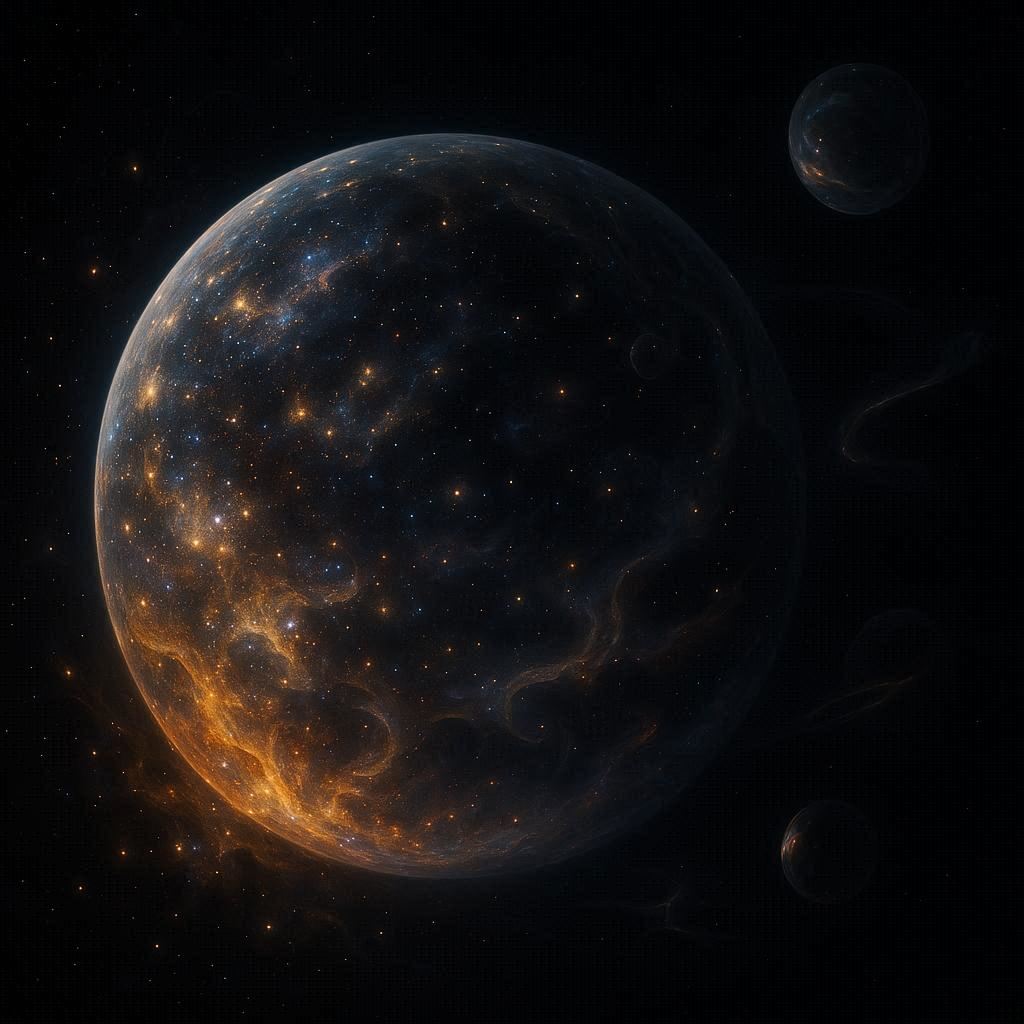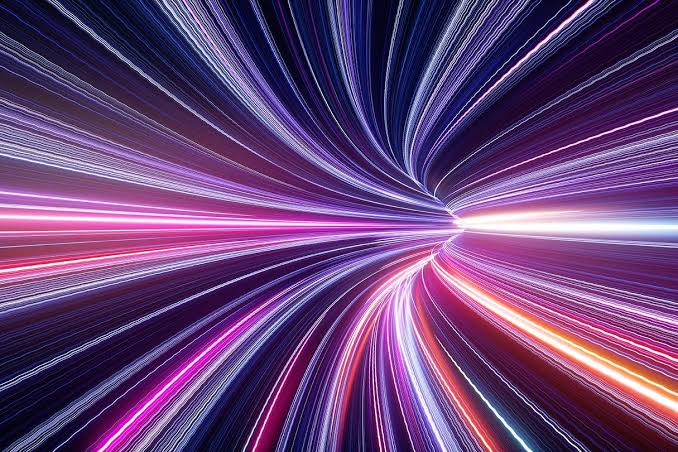From the earliest days of human thought, people have lifted their eyes to the night sky and wondered what lies beyond. The stars have always been our companions, their distant light reaching across the abyss of space to touch our imaginations. Yet for all their beauty, they also remind us of our smallness, of the finite bubble of existence we inhabit. With every advance in astronomy and physics, the universe itself has grown larger in our minds, stretching outward through galaxies and clusters, to distances almost impossible to comprehend. But even as we map the observable cosmos, a deeper question lingers: what exists beyond the boundaries of everything we know? What lies outside our universe?
This question strikes at the heart of human curiosity. It is not only scientific but profoundly philosophical, for it touches on the limits of knowledge and the meaning of existence. To ask what lies outside the universe is to challenge the very definition of “universe” itself, for by its classical meaning, the universe is everything—space, time, matter, and energy. If there is something beyond, then our understanding of “everything” must be incomplete. In recent decades, physicists and cosmologists have dared to entertain this possibility, imagining realms of existence beyond the visible horizon, structures and realities that might coexist with or even give birth to our own.
Defining the Edge of the Universe
Before we can ask what lies outside, we must carefully define what we mean by “the universe” and its “outside.” The observable universe is finite. It is the sphere of space from which light has had time to reach us since the Big Bang, roughly 13.8 billion years ago. Because space itself has expanded during this time, the observable boundary extends about 46 billion light-years in every direction. Beyond this cosmic horizon lies more universe, unobservable to us because its light has not yet had time to arrive.
But does the universe itself end at some ultimate edge, like the shore of an ocean? Current cosmology suggests otherwise. According to general relativity and measurements of cosmic microwave background radiation, space may be infinite, extending forever without boundary. If this is the case, then asking what lies “outside” becomes meaningless, since infinity has no edge. Yet infinity itself is a troubling concept, one that pushes human reason to its limits. Could the cosmos truly stretch endlessly, with galaxies continuing forever beyond our sight?
Another possibility is that the universe is finite but unbounded, much like the surface of a sphere. Just as you can walk endlessly around the Earth without encountering an edge, space itself may curve back on itself, forming a closed geometry where traveling far enough in one direction might eventually return you to your starting point. In such a cosmos, there is no “outside”—space is all there is.
Yet theories in modern physics have introduced new possibilities, more audacious than infinite extension or spatial closure. They suggest that our universe may be only one bubble in a vast multiverse, or one brane in a higher-dimensional space. These ideas invite us to look beyond everything we know and imagine realms of being that stretch beyond comprehension.
The Inflationary Multiverse
One of the most compelling scientific pathways to the idea of a reality beyond our universe arises from cosmic inflation. According to inflationary theory, the universe began with an unimaginably brief moment of exponential expansion, occurring within a fraction of a second after the Big Bang. This rapid inflation explains the remarkable uniformity of the cosmic microwave background, the afterglow of the Big Bang.
Yet inflationary models carry an astonishing implication. In most versions, inflation does not stop everywhere at once. Instead, it ends in pockets, like bubbles forming in boiling water, while continuing in other regions. Each bubble may become a universe in its own right, expanding and cooling to form galaxies and stars, while inflation carries on eternally elsewhere. This is the scenario known as eternal inflation, and it gives rise to the multiverse—a vast collection of universes, each potentially with its own laws of physics.
In this picture, our observable cosmos is but a single bubble in an infinite froth of universes, each one beyond the reach of the others. The “outside” of our universe is therefore not empty space but other universes, forever hidden from view by the inflating space between them. Some may resemble ours, while others may obey utterly alien rules: universes where gravity is stronger or weaker, where stars never form, where matter itself behaves differently.
This vision is both exhilarating and unsettling. It suggests that our universe, with its delicate balance of forces that allow life to exist, may not be unique but simply one possibility among countless others. The apparent fine-tuning of our cosmos could then be explained by cosmic selection: we live in a universe compatible with life because only such a universe could give rise to beings like us.
Quantum Branches and Parallel Realities
Beyond cosmology, quantum mechanics offers another path to the idea of realities outside our own. The quantum world is governed by probabilities rather than certainties. At the fundamental level, particles do not exist in fixed states until measured but instead hover in superpositions, existing in multiple possibilities simultaneously.
One interpretation of this strange behavior, known as the many-worlds interpretation, proposes that every quantum event branches reality into multiple outcomes. When an electron takes one path, the universe splits; when it takes another, a parallel universe emerges. If true, this means that our universe is but one branch among an infinite tree of possibilities, each one as real as the next. In one, you are reading this article; in another, you are not. In one, history unfolded as we know it; in another, entirely different civilizations arose.
Though untestable at present, the many-worlds interpretation provides a radical answer to what exists outside our universe: nothing less than a near-infinite collection of parallel realities, stacked not in physical space but in the fabric of quantum possibility.
Higher Dimensions and Brane Cosmology
String theory, one of the leading candidates for a theory of everything, extends the imagination further still. According to string theory, the fundamental building blocks of nature are not point-like particles but tiny vibrating strings, and their vibrations give rise to the forces and particles we observe. To be mathematically consistent, string theory requires extra dimensions—beyond the familiar three of space and one of time.
In some models, our universe is a three-dimensional “brane” floating within a higher-dimensional space called the bulk. Other branes may exist parallel to ours, invisible because we are confined to our own brane’s dimensions. Occasionally, these branes might collide, producing events that resemble a Big Bang and giving rise to a new universe. In such a framework, the “outside” of our universe is a higher-dimensional expanse filled with other branes, perhaps infinitely many, each carrying its own universe along.
This vision is profoundly alien to human experience, for we cannot perceive these higher dimensions directly. Yet mathematics and theory suggest they may be real, their unseen presence shaping the forces and constants of our universe.
The Limits of Knowledge and Imagination
For all these fascinating ideas, we must pause to recognize the limits of our knowledge. No experiment today can directly probe what lies outside our observable universe. The light that reaches us is bounded by the cosmic horizon; beyond it, we cannot see. The theories of inflation, multiverses, and branes remain speculative, supported by mathematics but untested by observation. They dwell at the edge of science, where imagination meets the rigor of physics.
Yet uncertainty does not diminish the importance of the question. To ask what lies beyond is to push against the boundaries of human thought, to refuse to accept the visible as the whole. Science advances precisely by daring to ask questions that once seemed unanswerable.
Philosophically, too, the question reveals the depth of human yearning. Even if we never discover the true answer, the act of imagining what might exist outside our universe expands our sense of reality. It teaches us humility, reminding us that our cosmos, vast as it appears, may be only a fragment of something greater.
The Mystery of Nothingness
In contemplating what lies outside the universe, we inevitably confront the concept of nothing. If the universe is everything, then what could exist beyond it but nothingness? Yet even nothing is not simple. In physics, the vacuum is never truly empty but seethes with quantum fluctuations, fields, and potentialities. Some theorists even suggest that universes can arise spontaneously from quantum nothingness, emerging like bubbles in a cosmic sea.
But true nothingness—the complete absence of being—may be beyond human comprehension. Our minds are shaped by existence, by matter and energy, by time and space. To imagine absolute nothing is perhaps impossible, for even the concept itself invokes the shadow of something. Thus, when we ask what lies outside the universe, we may be reaching toward a mystery that can never be fully grasped.
A Cosmic Perspective on Our Place
Regardless of whether the universe is infinite, one among many, or surrounded by higher-dimensional realms, the question of the outside reshapes how we see ourselves. It suggests that our existence, far from being the center of all things, may be a local phenomenon in a vast and unknowable reality. Yet this perspective is not diminishing but enriching. To be part of a universe that may itself be part of a greater whole is to participate in a story larger than imagination itself.
Albert Einstein once remarked that the most incomprehensible thing about the universe is that it is comprehensible. To this we might add: the most awe-inspiring thing about existence is that we can even wonder about what lies beyond it. Our ability to ask the question, to stretch our thoughts into realms unseen, is itself a triumph of consciousness.
Conclusion: The Infinite Horizon of Wonder
So, what exists outside of our universe? Perhaps endless galaxies beyond the horizon, hidden by the speed of light. Perhaps parallel universes born of inflation, bubbling endlessly in a multiverse. Perhaps quantum branches splitting reality at every moment. Perhaps higher-dimensional branes floating in a cosmic bulk. Or perhaps nothing at all, a silence and absence that defies human language.
We do not yet know, and perhaps we never will. But in the asking, we discover something essential about ourselves. We are creatures who gaze beyond boundaries, who cannot help but imagine what lies past the edge of sight. The universe may withhold its secrets, but our yearning for them is part of what makes us human.
In the end, the question of what lies outside the universe is not only a scientific inquiry but a poetic reflection on the nature of existence. It reminds us that knowledge is a horizon we are always chasing, and that beyond every discovery lies a deeper mystery. The cosmos, vast and unfathomable, invites us to dream beyond the stars, to embrace the infinite, and to find wonder in the unknown.






